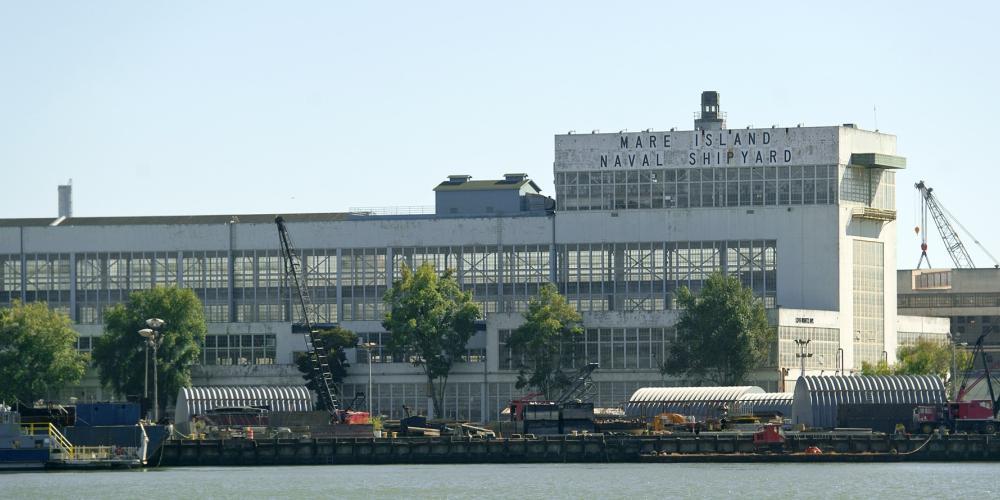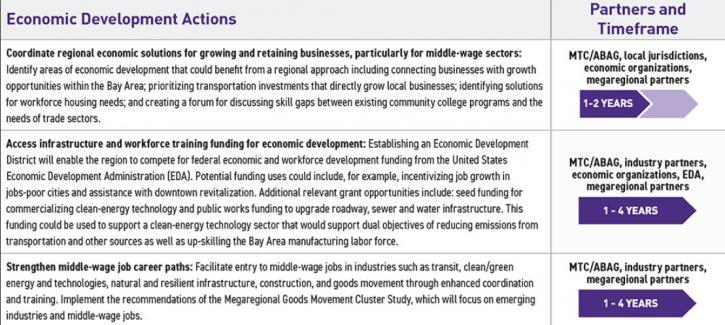
Over at the Upshot, Emily Badger is asking a difficult, important question: What happens when globalization and technology cause big, rich cities in the U.S. to lose their links to smaller cities and rural areas? The piece starts with an examination of how the Bay Area economy has changed over recent decades:
Well before anyone thought of this place as the center of the tech economy, the Bay Area built ships. And it did so with the help of many parts of the country.
Douglas fir trees logged in the Pacific Northwest were turned into lumber schooners here. Steel from the East, brought in by railroad, became merchant vessels. During World War II, workers assembled battleships with parts from across the country: steam turbines from Schenectady, N.Y., and Lester, Pa.; gear winches from Tacoma, Wash.; radio equipment from Newark; compasses from Detroit; generators from Milwaukee.
Most of these links that tied the Bay Area’s prosperity to a web of places far from here have faded. Westinghouse closed the Pennsylvania plant. General Electric downsized in Schenectady. The Milwaukee manufacturer dissolved. The old Bethlehem Shipbuilding yard in San Francisco will soon be redeveloped. And its former parent company, the Bethlehem Steel Corporation in Bethlehem, Pa., went bankrupt in 2001.
The companies that now drive the Bay Area’s soaring wealth — and that represent part of the American economy that’s booming — don’t need these communities in the same way. Google’s digital products don’t have a physical supply chain. Facebook doesn’t have dispersed manufacturers. Apple, which does make tangible things, now primarily makes them overseas.
A changing economy has been good to the region, and to a number of other predominantly coastal metros like New York, Boston and Seattle. But economists and geographers are now questioning what the nature of their success means for the rest of the country. What happens to America’s manufacturing heartland when Silicon Valley turns to China? Where do former mill and mining towns fit in when big cities shift to digital work? How does upstate New York benefit when New York City increases business with Tokyo?
The problems raised and questions posed by this piece are among the most difficult policy issues facing the world today. It relevance applies not only to the Bay Area's relationship with other, smaller metros in the country, but also for the relationship between counties, cities and even neighborhoods within the region itself, and the widening gaps between the haves and the have-nots.
As the San Francisco Bay Area's regional transportation and land-use planning agencies, MTC and ABAG are no strangers to these vexing problems. Broadly shared economic vitality and equitable access are major goals of Plan Bay Area 2040, the region’s long-range transportation plan and sustainable communities strategy, and the agencies further adopted an Action Plan for Economic Development to address areas where the plan falls short of meeting its aggressive and aspirational performance targets:
Creating a more affordable region also requires a Bay Area economy with greater economic opportunity and mobility for all the region’s residents and jurisdictions. The coming years could bring many threats to low- and middle-wage jobs through technological advancement or continued economic globalization. The Action Plan therefore recommends expanding regional economic development capacity while also focusing on increasing pathways to middle-wage jobs, preserving infrastructure and increasing affordable transportation access to job centers.

One of the major vehicles to achieving the Economic Development goals of the Action Plan will be ABAG's effort to prepare a Comprehensive Economic Development Strategy that will establish a Bay Area Regional Economic Development District as designated by the US Economic Development Administration. Read more about this comprehensive approach to improving economic resilience and prosperity for all the region's residents.
Still, any attempt to grapple with these complicated issues of economic divergence must be cognizant of the limits of local and regional policy, no matter how well-designed or well-intentioned. While critically important - and certainly a difference-maker on the margins of a "help" or "harm" scale - at a certain point there is only so much impact regional policy can have on what are ultimately macro-economic phenomena. As noted by the academics in Badger's piece, it is the interplay between markets and technology, national and international governance, as well as formal and informal institutions that, for good and for ill, drives the economic performance and outcomes we experience on the ground.



Submit your comment
In order to receive a reply to your comment, please provide an email address.